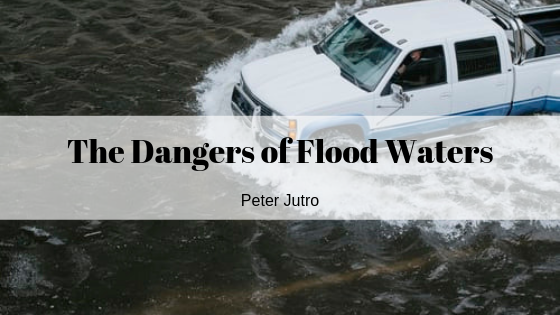Though there are a number of natural disasters that can cause damage and destruction to property and individual livelihood, floods are perhaps some of the most underestimated forces that threaten communities. Recognizing the dangers of flood waters and taking appropriate precautions can help limit injuries, damages, and deaths that result from a lack of information and preparedness. Traversing flood waters can be a notoriously dangerous endeavor, so it is advised that individuals in flooded areas seek higher ground.
Hidden Dangers
Murky floodwaters can conceal many hidden dangers. Because of the uncertain and varying depth of flood waters as well as their lack of clarity, what lies beneath the surface can present a number of hazards. From downed power lines to lumber and other debris, objects hidden in any amount of muddied water can threaten your safety.
Contaminants
Flood waters have the potential to become rich with contaminants that can threaten individuals’ health and safety. Everything from human waste leaking from sewage systems to agricultural pesticides to coal ash and industrial waste can become mixed with flood waters, making them hazardous and toxic. Coming into contact with flood water, especially when you have an open wound or have a compromised immune system, can result in infections including tetanus and even leptospirosis. Consuming anything prepared with or contaminated by flood water can also lead to medical complications, particularly in the form of gastrointestinal distress and illness. Protect yourself and your family by frequently washing your hands with clean water and soap, especially after coming into contact with flood water, and bathing only in sanitary water.
Standing Water
Some individuals feel compelled to travel through floodwaters in order to reach a safer environment This can be dangerous and must be undertaken with great care. The body of most passenger cars is raised about six inches off the ground, so just a few inches of standing water can cause the driver to lose control of the vehicle, posing a hazard to passengers as well as any structures, vehicles, or pedestrians in the area. Even if the amount of standing water appears minimal, it is advised to avoid attempting to walk or drive through any standing water unless you can clearly see the ground and determine that there is no debris or other dangers underfoot.
Afterthought
Perhaps my most important flood lesson was taught by my late friend and mentor, Professor Gilbert F. White, the noted University of Colorado geographer. He argued that “hard” engineering solutions to flooding, such as dams and levees, although designed to protect us from floods, increased rather than decreased the effects and costs of a flood, since such engineering provides a false sense of security and encourages human settlement in the still vulnerable floodplain. Floods, he wrote, were acts of God, whereas flood losses were largely acts of man.

